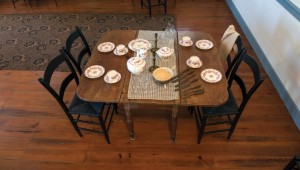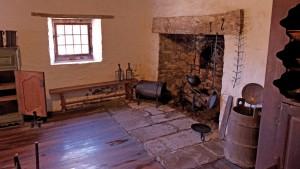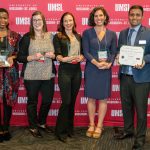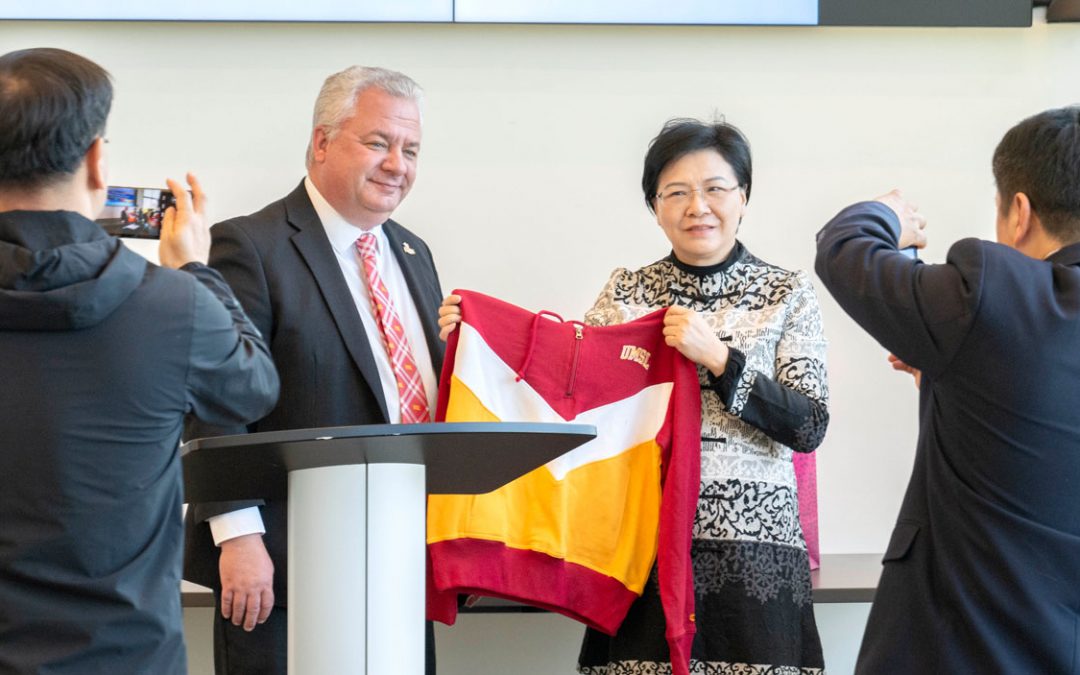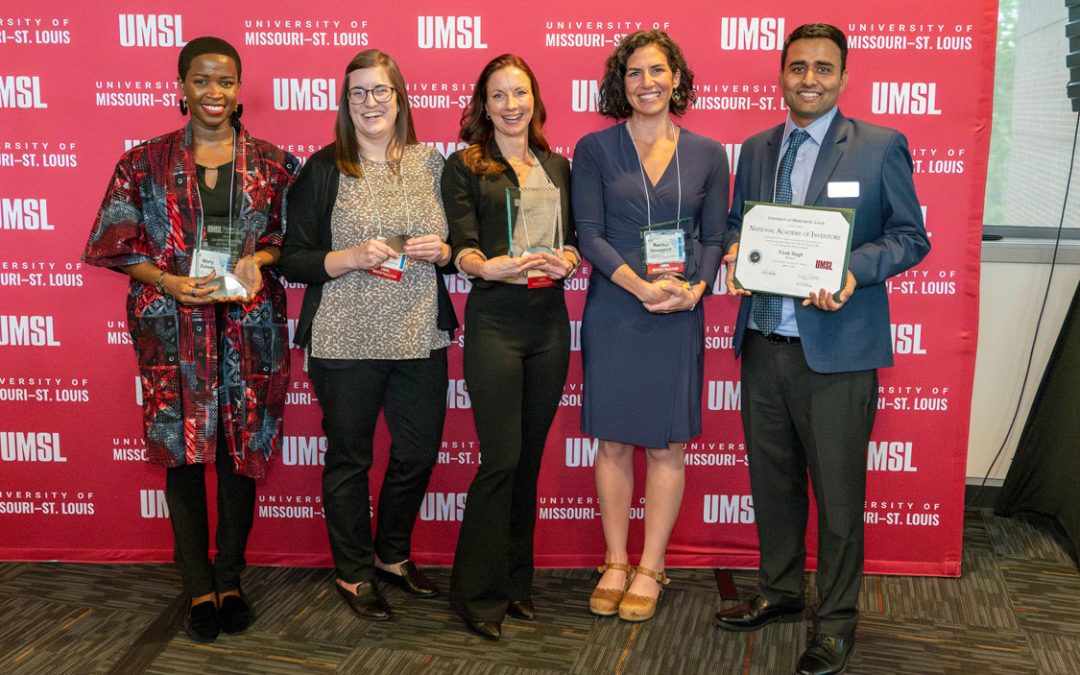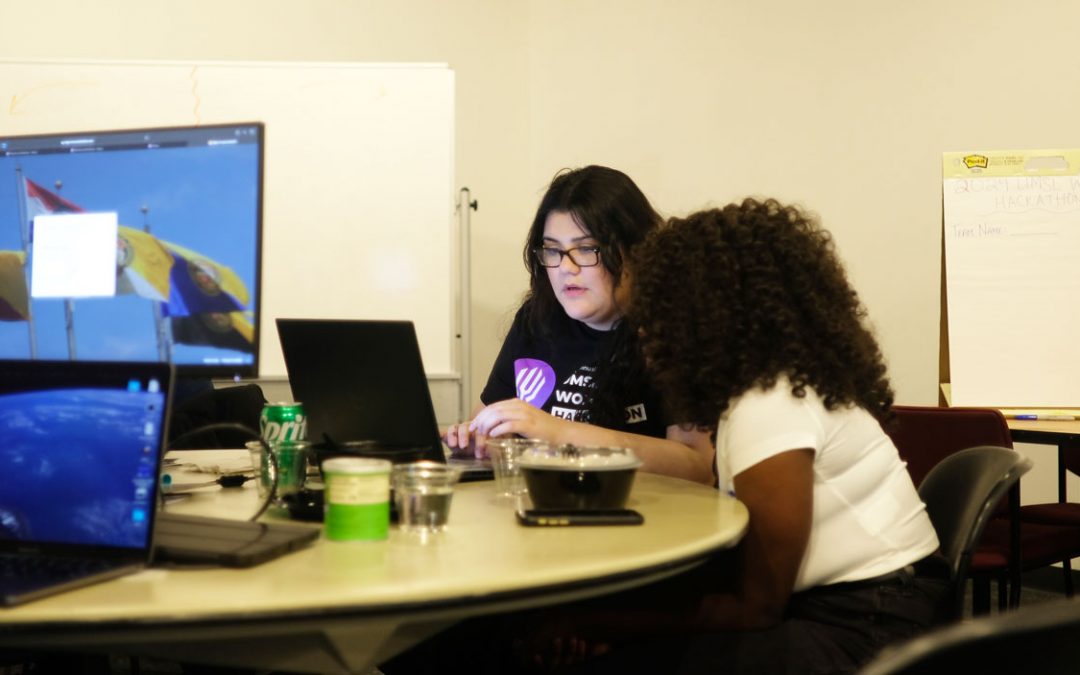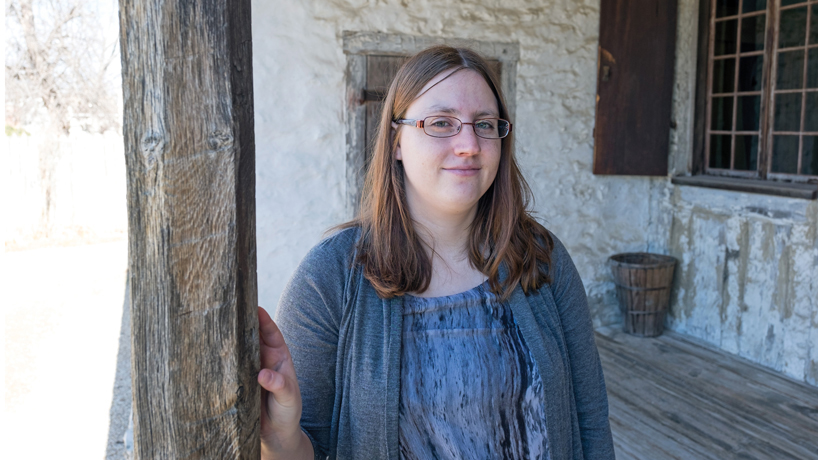
University of Missouri-St. Louis museum studies student and Bolduc House intern K.C. Strittmater uses her experience of performing Renaissance reenactments to engage museum patrons in fresh ways. (Photos by August Jennewein)
Late December flooding in the historic French colonial district of Ste. Genevieve, Mo., could have destroyed the Bolduc House Museum and 300 years of antiquity along with it.
The nearby Mississippi River swelled to heights not reached since the Great Flood of 1993. Fortunately, the home of Monsieur Louis Bolduc survived with only minimal damage. University of Missouri–St. Louis museum studies graduate student and Bolduc House intern K.C. Strittmater admits she would have been devastated.
“These items are irreplaceable. They’re coming from a time period that’s long gone. These were living objects, things that were used every day,” she says. “We’re not looking at a gilded clock that was used once in a while by King Louis XIX. The cookware and furniture are things that your great-great grandmother could have used. These objects are very human. They share stories and life lessons, and to lose them suddenly would be tragic.”
Strittmater’s undergraduate work in philosophy, classical history and religion at Carthage College in Kenosha, Wis., cultivated her interest in the stories artifacts can tell. Moving forward in her academic career, she found herself searching for ways to make museum experiences accessible and relatable.
“I really wanted to help expand the field. I felt that museums appeared to be for either the very young, the very old or the elite,” she says. “I really wanted to figure out how to make historic spaces more inviting for a diversity of people. Walking through a museum and learning the personal mythologies behind unassuming objects can give you a kind of strength to face the day.”
Strittmater came to UMSL in 2015, started her internship at the Bolduc house and took on a variety of roles, searching for the skill set she wanted to master. She has worked with documentation, reconstruction, collections and historic preservation, yet she did not anticipate taking a crash course in disaster management.
“I called my supervisor after winter break to get back to work, and he told me ‘Don’t come down here. It’s dangerous, and we don’t want you to come down here and get stuck in the flooding and ice,’” she says. “All of our objects were moved to the top floors of the Bolduc house or offsite to St. Louis. Once the waters receded, and it was safe to return to work, we had to clean the house and reset the exhibits.”
Now that the threat of catastrophe has passed, Strittmater can resume refining the unique events she has planned to attract and engage visitors. Drawing on her experience in Renaissance reenactment, she has introduced a werewolf hunt to the Bolduc house’s annual Halloween festival.
“Strangely enough, the fear of werewolves was a big problem in colonial France,” she says. “Superstitions and such were still very prevalent during this time period. People today believe that since the Enlightenment was in full effect these kinds of superstitions had fallen to the wayside, but they hadn’t. And since the new world was pretty much a giant, rural backland, superstitions only intensified.”
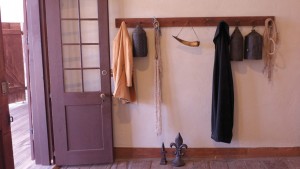
As the oldest standing structure in Ste. Geneviève, Mo., the Bolduc House has been designated a National Historic Landmark.
Bolduc emigrated from France not long after legends of The Beast of Gévaudan, a prototypical werewolf, terrorized the countryside and prompted citizens to take up arms and hunt the monster. And like all American settlers, Bolduc would have brought his worldview to his new home, right down to the fear of supernatural creatures.
For the Bolduc house event, a gracious volunteer played the werewolf, costume and all. And instead of hunting for a ravenous beast with swords and pistols, Strittmater armed participants (ages 16 and up) with garlic rods and led them on a game of hide and seek in the Bolduc House backyard.
“Once the werewolf was captured, we had a local militia member unmask him and bring him back to his humanity,” she says. “It’s a very interesting story, and I wanted people to experience this in a fun way. Popular mythologies evolve over time. And at its core, the werewolf represents our fear of losing our humanity and rational thought. Are we animals? Or are we more? This fear and questioning has remained consistent over the centuries. Only our perceptions change.”
Maris Boyd Gillette, E. Desmond Lee Professor of Museum Studies and Community History at UMSL, counts herself as a fan of Strittmater’s energetic approach to complex theory and subject matter.
“K.C. loves to ask challenging questions and engage in deep discussions about controversial topics,” Gillette says. “She is a creative thinker who puts her strong historical research skills to use in public history and cultural heritage projects that combine education and entertainment. She is a can-do person and very open to new ideas and ways of doing things.”
As Strittmater dreams of working at Spain’s La Sagrada Familia Basilica, she will continue to expand her skill set and invite visitors to explore minute and sweeping historical themes.
“If you take an object like your great-great-grandfather’s pocket watch and put it in a museum, you make it meaningful in a broader context,” she says. “It becomes more – a part of culture for your community, your country and the world.”
This story was originally published in the spring 2016 issue of UMSL Magazine.

